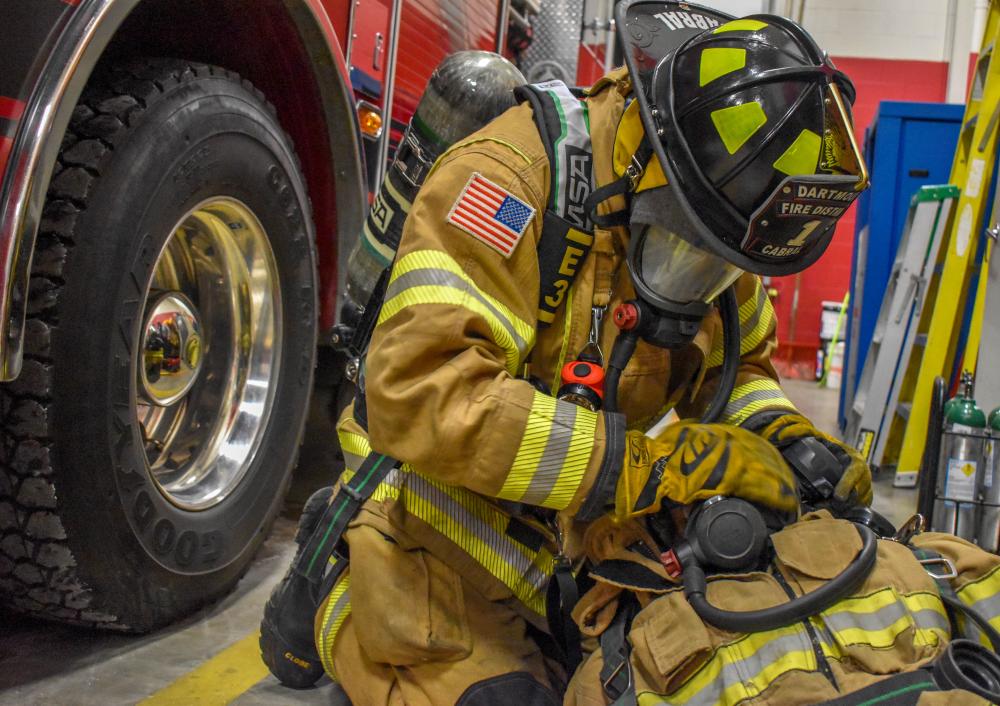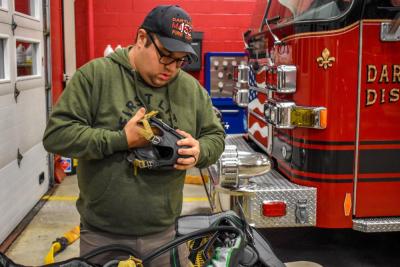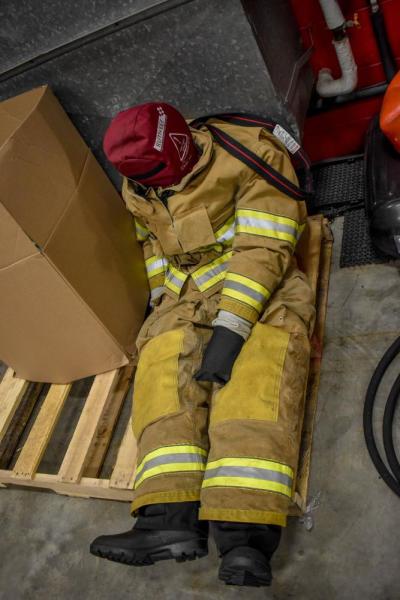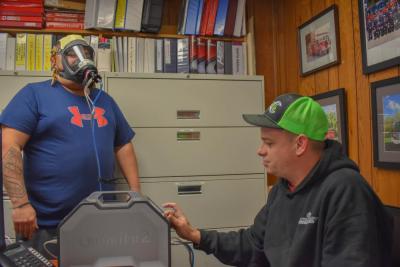Firefighters test their identification skills, efficiency at training session
When tackling a blaze inside of a building, the ability to identify the length of a lug along a coupling on a fire hose could mean the difference of heading toward safety or further into a fire for first responders.
“You always want to make sure you’re going in the right direction,” said District 1 firefighter Ryan Snell.
To ensure its crews are ready when a serious fire arises, a handful of District 1’s firefighters took part in their yearly self-contained breathing apparatus drill on Wednesday, Jan. 25.
Prior to the start of the drill, firefighters test the masks through a machine to ensure there aren’t any oxygen leaks.
A training session was also held on Jan. 11.
As part of the sessions, firefighters individually crawled through an obstacle course set up inside the Bridge Street Station’s garage. Along the way, they had to identify tools, assemble hoses, and attach a breathing apparatus to a dummy of an injured firefighter.
Firefighters also had to crawl under a table which simulated fallen debris and fit through a partitioned wall, testing their ability to navigate through narrow spaces.
To recreate the lack of visibility inside of a burning building, firefighters wore masks with a “light fog tint” as they crawled through the course, relying almost entirely on their sense of touch.
“All certain scenarios that [firefighters] should know how to handle,” Deputy Chief Jake Bettencourt said. “And that’s what we’re trying to accomplish.”
All of this was done while following a hose line along the floor of the garage bay. To ensure they were heading in the right direction, firefighters had to feel along the lugs of the hose couplings.
According to Snell, the longer of the lugs — which is located on the “male” coupling of the hose — will always lead toward the fire truck.
The “male” coupling has exposed threads, while the “female” has matching threads inside the swivel.
Training sessions are mandatory for the firefighters at District 1, Bettencourt explained. He said the sessions allow the veterans to maintain their skills in case of an emergency, while newer ones can get a sense of what could happen.
“This way, [firefighters] have a good idea to get through these situations and can call back to these calmer sessions,” he said.
As the year continues, Bettencourt said the firefighters will practice search and rescue operations at the former station across the street. Similar to the SCBA drill, crews will have to crawl through a course, but will have to be on the lookout for any “victims” and other heat sources using devices such as a thermal camera.
This year, Bettencourt said the department will add a dummy that can be properly identified on the camera.
“It will almost be lifelike,” Bettencourt said.
There will also be a “bail-out building” on the second floor, which crews will use to practice leaving a multi-story building when access to the rest of the building is blocked from the fire.
“We just want our firefighters to be ready for whatever could occur on scene,” Bettencourt said.


















